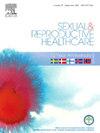将氨甲环酸引入产后出血治疗方案:一项使用重复横断面分析的观察性研究
IF 1.7
3区 医学
Q3 PUBLIC, ENVIRONMENTAL & OCCUPATIONAL HEALTH
引用次数: 0
摘要
目的原发性产后出血(PPH)是孕产妇发病和死亡的重要原因之一。在WOMAN试验之后,氨甲环酸(TXA)被认可为PPH管理的重要组成部分,因为它被证明可以降低产妇因出血而死亡的风险。本研究旨在评估澳大利亚一家三级妇产医院在PPH管理政策中引入TXA前后阴道分娩后与PPH相关的产妇结局的变化。材料和方法进行了重复的横断面分析,评估了将TXA引入PPH管理方案之前和之后两年的结果。主要终点是PPH时的估计失血量。评估的其他结果包括产后红细胞输注、产后铁输注和PPH的手术管理。描述和比较母亲的特征。采用多项logistic回归估计未调整和调整TXA前后出血1000-1499 mL或≥1500 mL(参考500-999 mL)的相对风险。结果这一政策改变并未对产妇结局产生影响。令人惊讶的是,在调整和未调整的模型中,PPH≥1500 ml的风险都增加了。鉴于我们研究的观察性质,这一发现很可能是由于未知的混杂因素造成的。结论:尽管我们修改了治疗方案,纳入了1 g的TXA,但严重PPH的发生率仍有所增加。需要持续的研究来确定导致PPH的因素,以及最佳的医疗管理。本文章由计算机程序翻译,如有差异,请以英文原文为准。
Introducing tranexamic acid into the protocol for management of post-partum haemorrhage: An observational study using repeated cross-sectional analysis
Objective
Primary post-partum haemorrhage (PPH) is an important cause of maternal morbidity and mortality. Following the WOMAN trial, tranexamic acid (TXA) was endorsed as an important component of PPH management, because it was shown to reduce the risk of maternal death due to bleeding. This study aimed to assess changes in maternal outcomes in relation to PPH following vaginal birth pre and post the introduction of TXA into the PPH management policy at a tertiary level Australian Maternity Hospital.
Materials and methods
A repeated cross-sectional analysis was performed, assessing outcomes for the two years before, and two years after the introduction of TXA into the PPH management protocol. The primary outcome was estimated blood loss at PPH. Additional outcomes assessed were red cell transfusion post-delivery, iron infusion post-delivery and operative management of PPH. Maternal characteristics were described and compared. Multinomial logistic regression was used to estimate the unadjusted and adjusted relative risk of having blood loss 1000–1499 mL or ≥1500 mLs (with reference 500–999 mLs) pre and post TXA.
Results
This policy change did not confer a difference in maternal outcomes. Surprisingly, there was an increased risk of PPH ≥ 1500 mLs in both adjusted and unadjusted models. Given the observational nature of our study, it is likely this finding is due to an unknown confounder.
Conclusions
The incidence of severe PPH increased despite alteration to our management protocol to include 1 g of TXA. Ongoing research is required to determine factors contributing to PPH, and the optimal medical management.
求助全文
通过发布文献求助,成功后即可免费获取论文全文。
去求助
来源期刊

Sexual & Reproductive Healthcare
PUBLIC, ENVIRONMENTAL & OCCUPATIONAL HEALTH-
CiteScore
2.70
自引率
5.60%
发文量
73
审稿时长
45 days
 求助内容:
求助内容: 应助结果提醒方式:
应助结果提醒方式:


